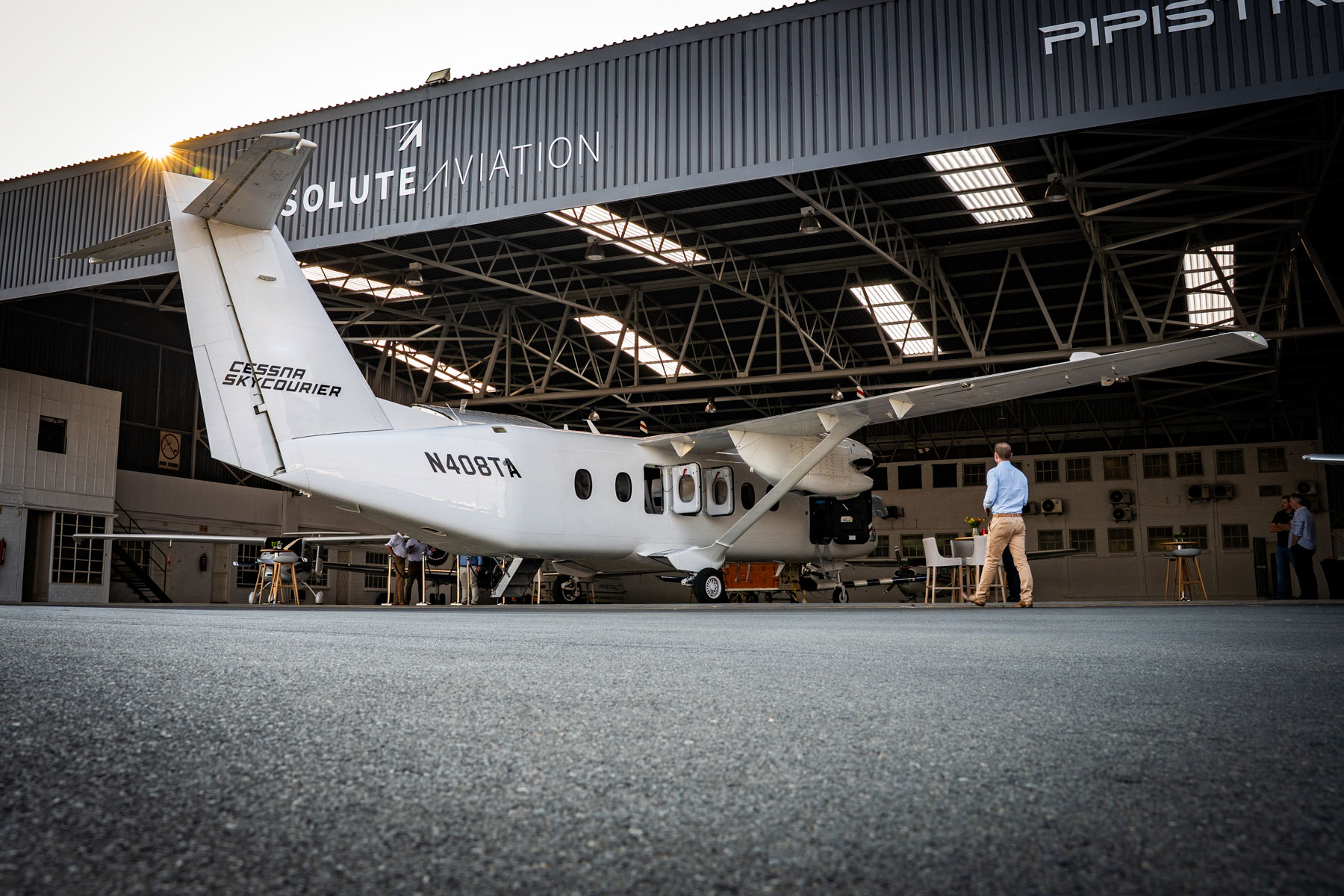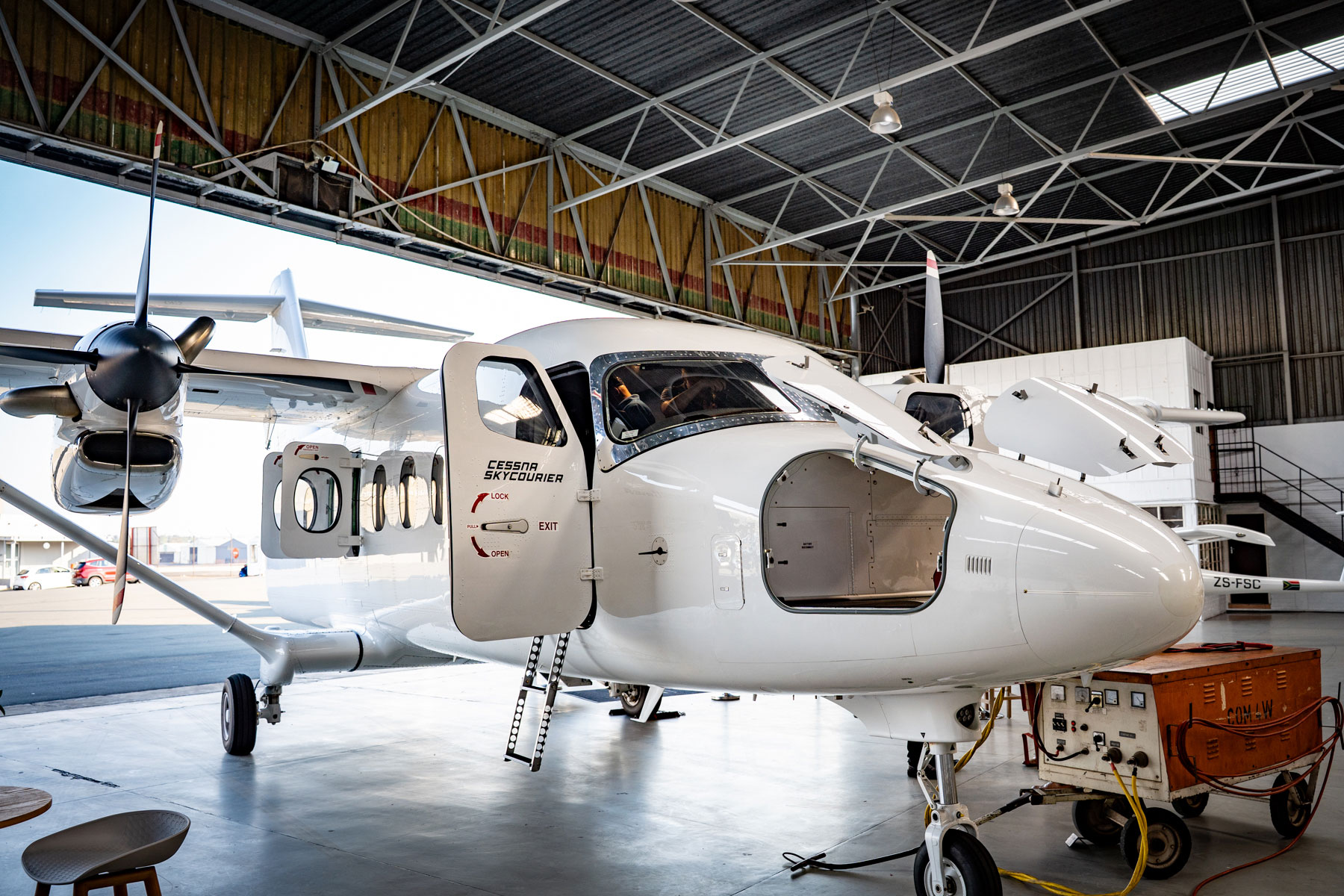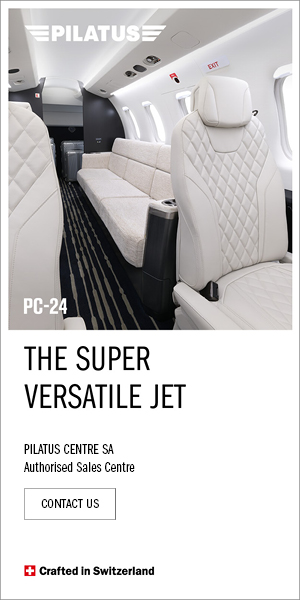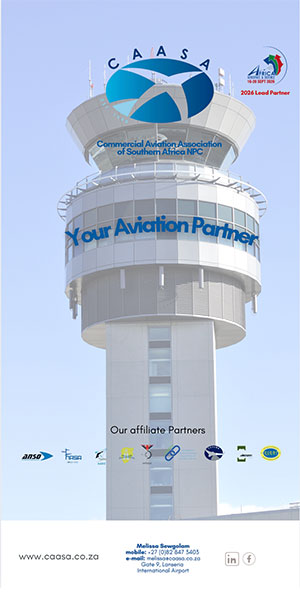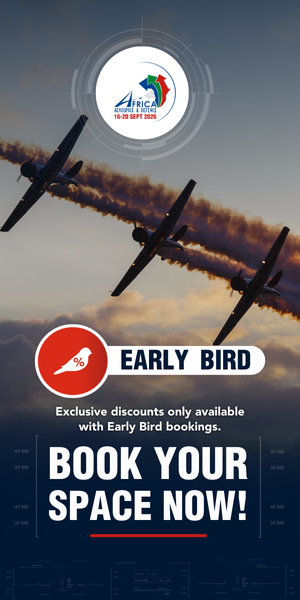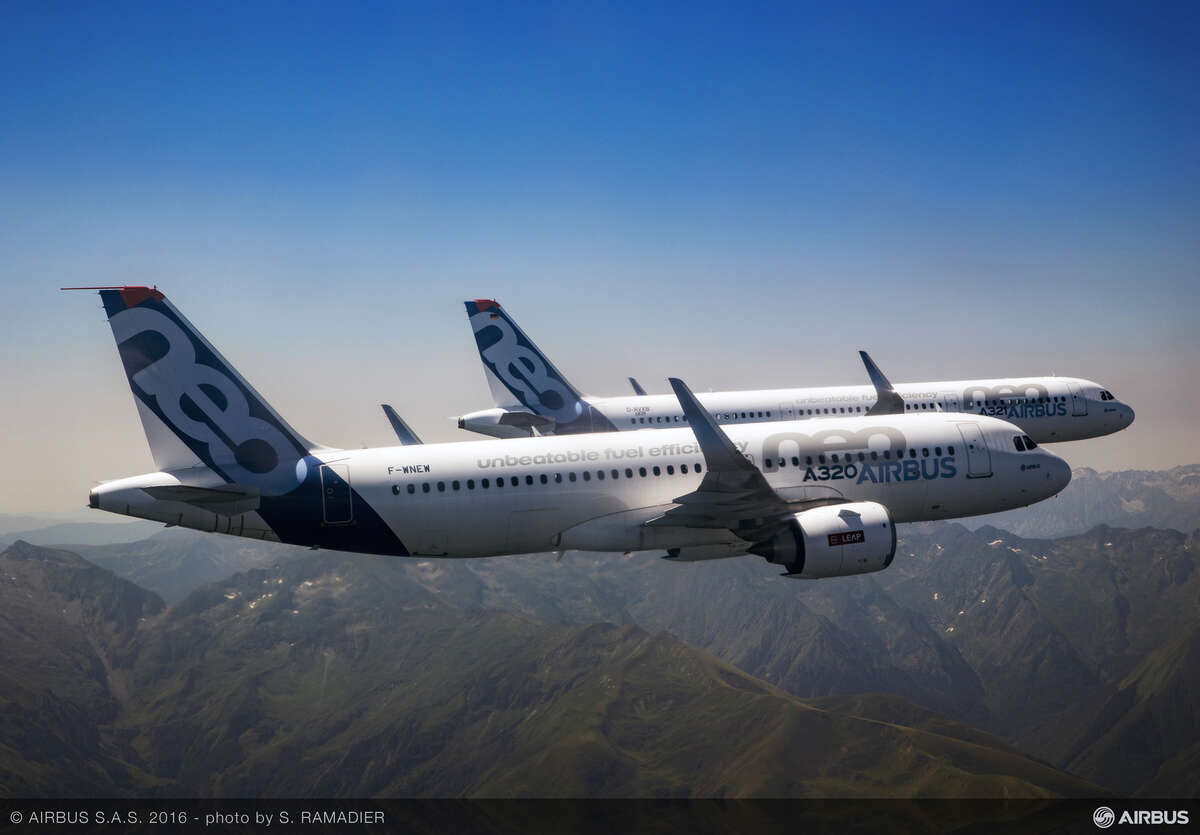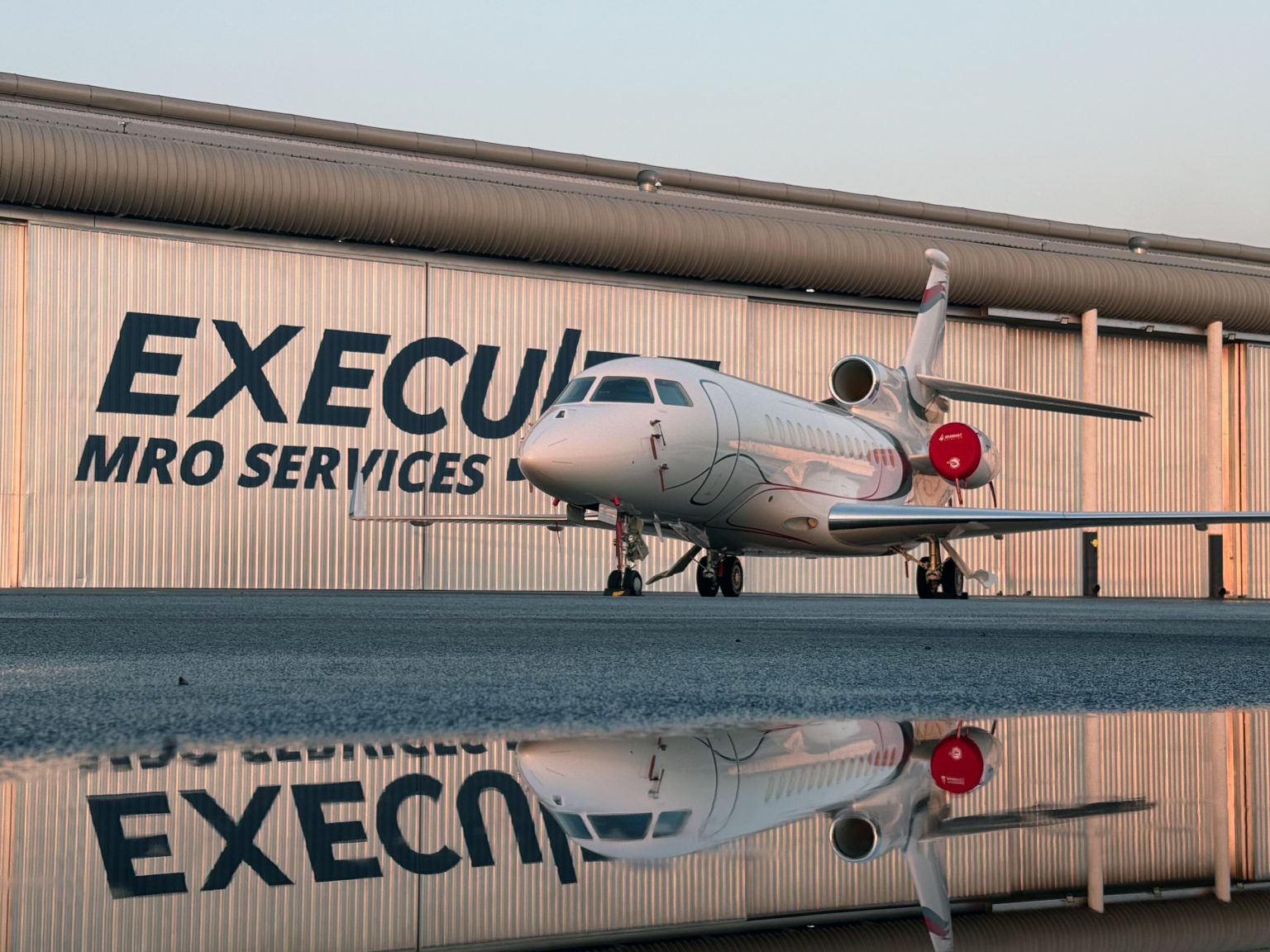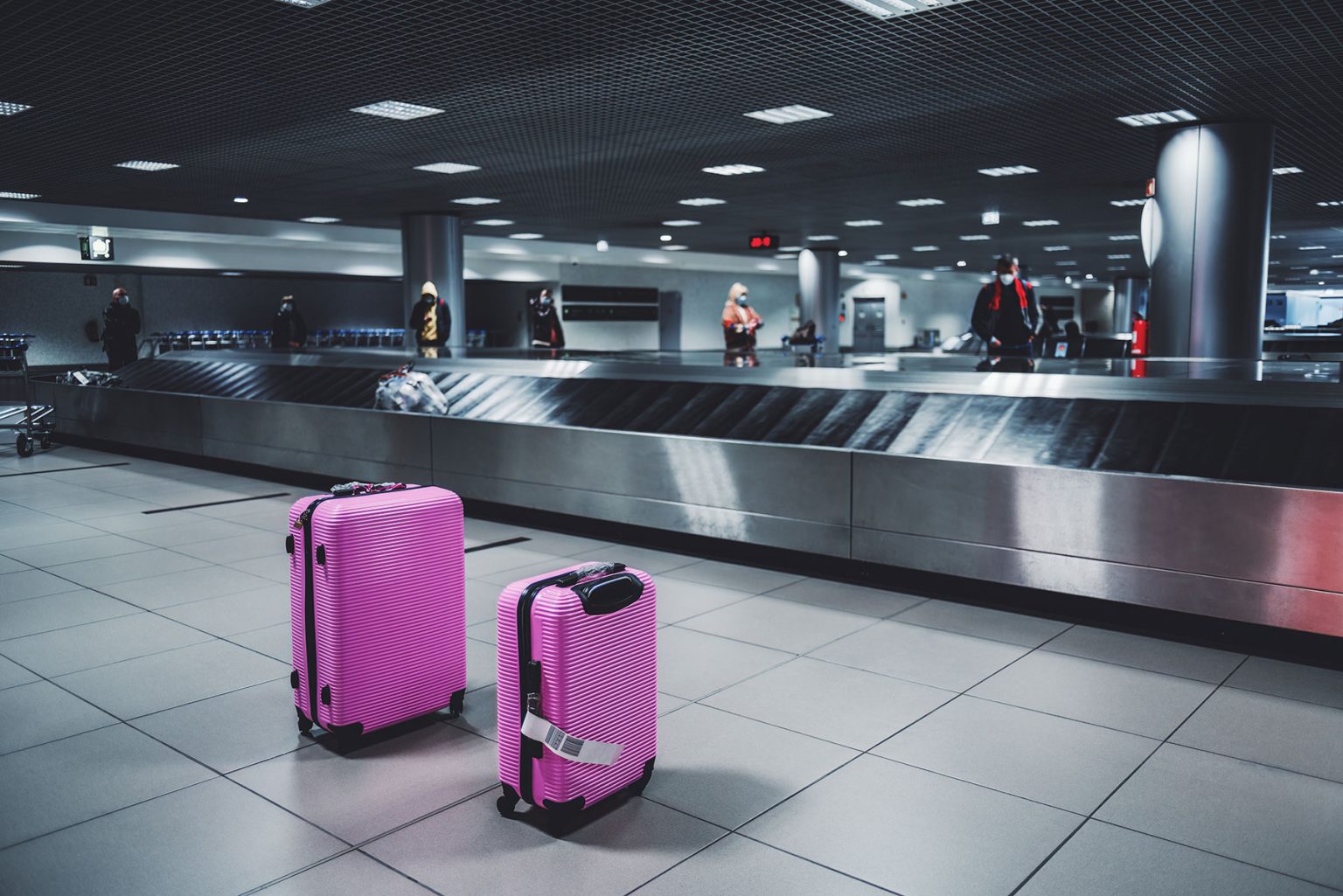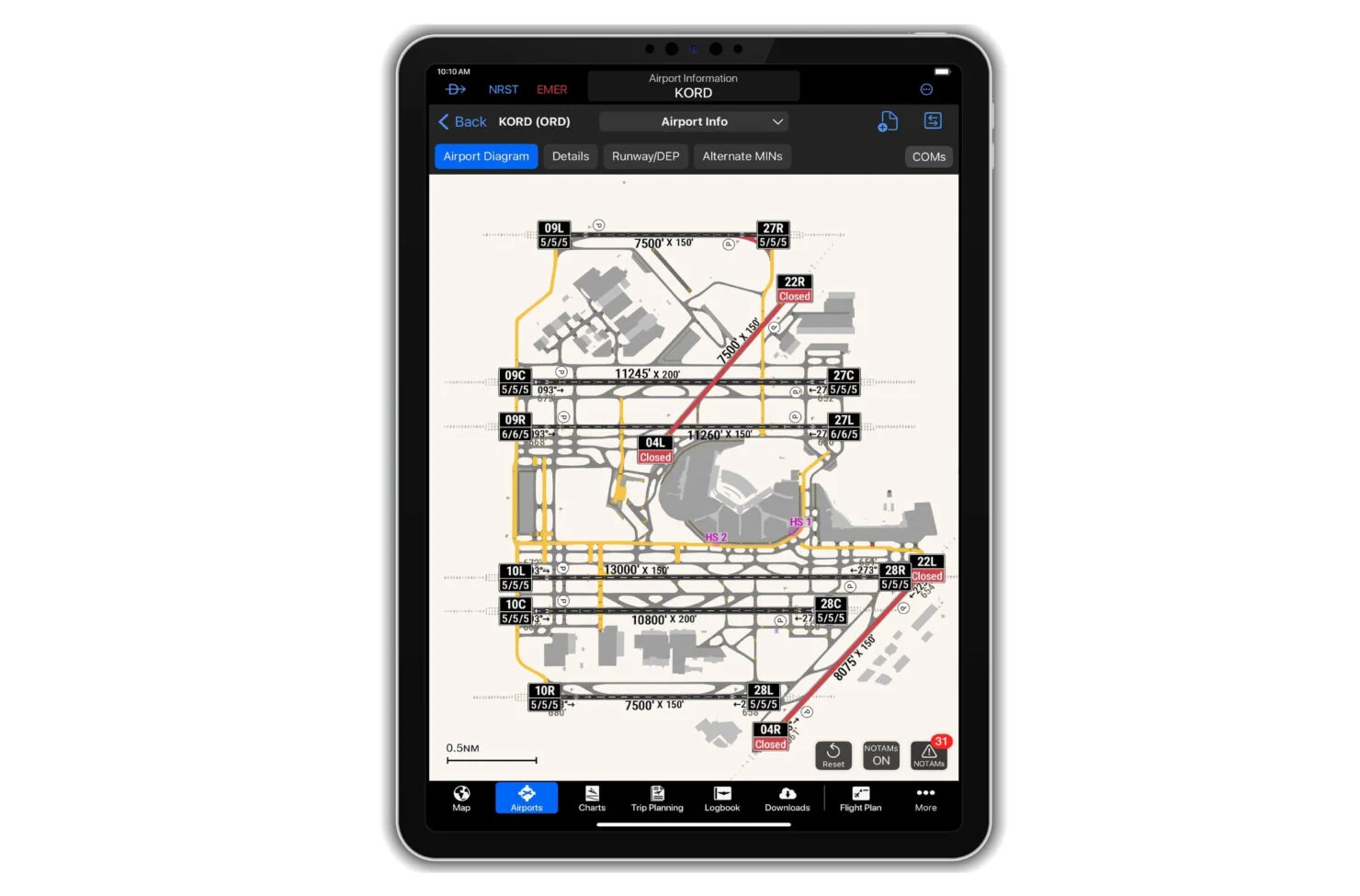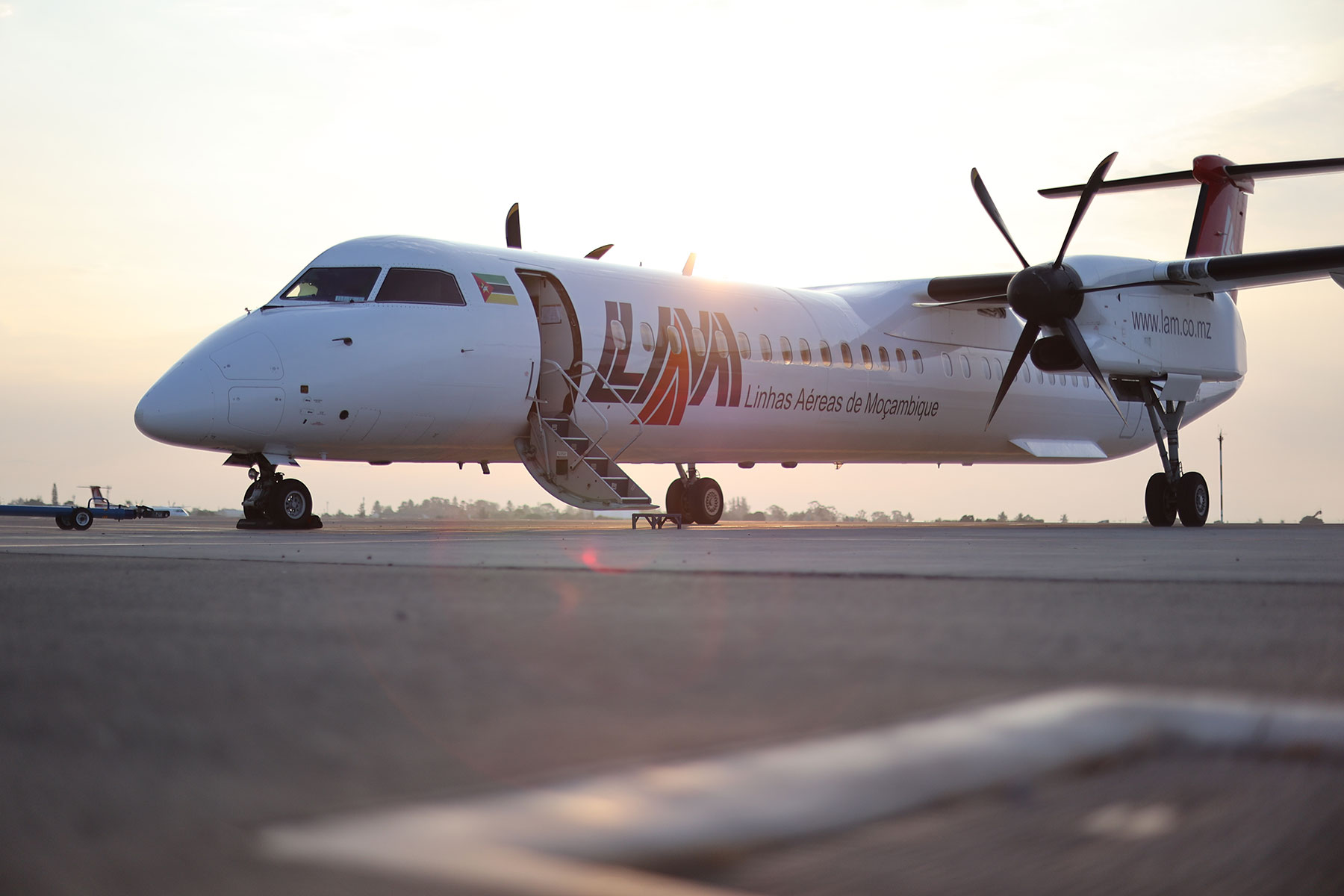The Cessna SkyCourier® has officially arrived in Africa for its grand tour, and Justin van Tonder, Aircraft Sales Director at Absolute Aviation, provided an in-depth walk-through of the 19-seat, twin-engine turboprop aircraft during a recent static display held in their hangar at Lanseria.
Designed to maximise efficiency, reliability, and profitability for regional operators, the Cessna SkyCourier® combines a large payload with excellent short-field performance. It is ideally suited for commuter routes, charter services, and remote-access missions where capacity and flexibility are critical. The freighter configuration further enhances its operational versatility, providing additional value for operators.
With a maximum cruise speed of 210 knots (389 km/h), a useful load of 6,000 pounds, and a take-off field length requirement of just 3,660 feet (1,116 metres), the aircraft offers exceptional performance for both high-frequency and remote-airstrip operations, positioning it as a strong contender for African markets. The cockpit accommodates two pilots and up to 19 passengers, enabling operators to achieve high utilisation and revenue efficiency.
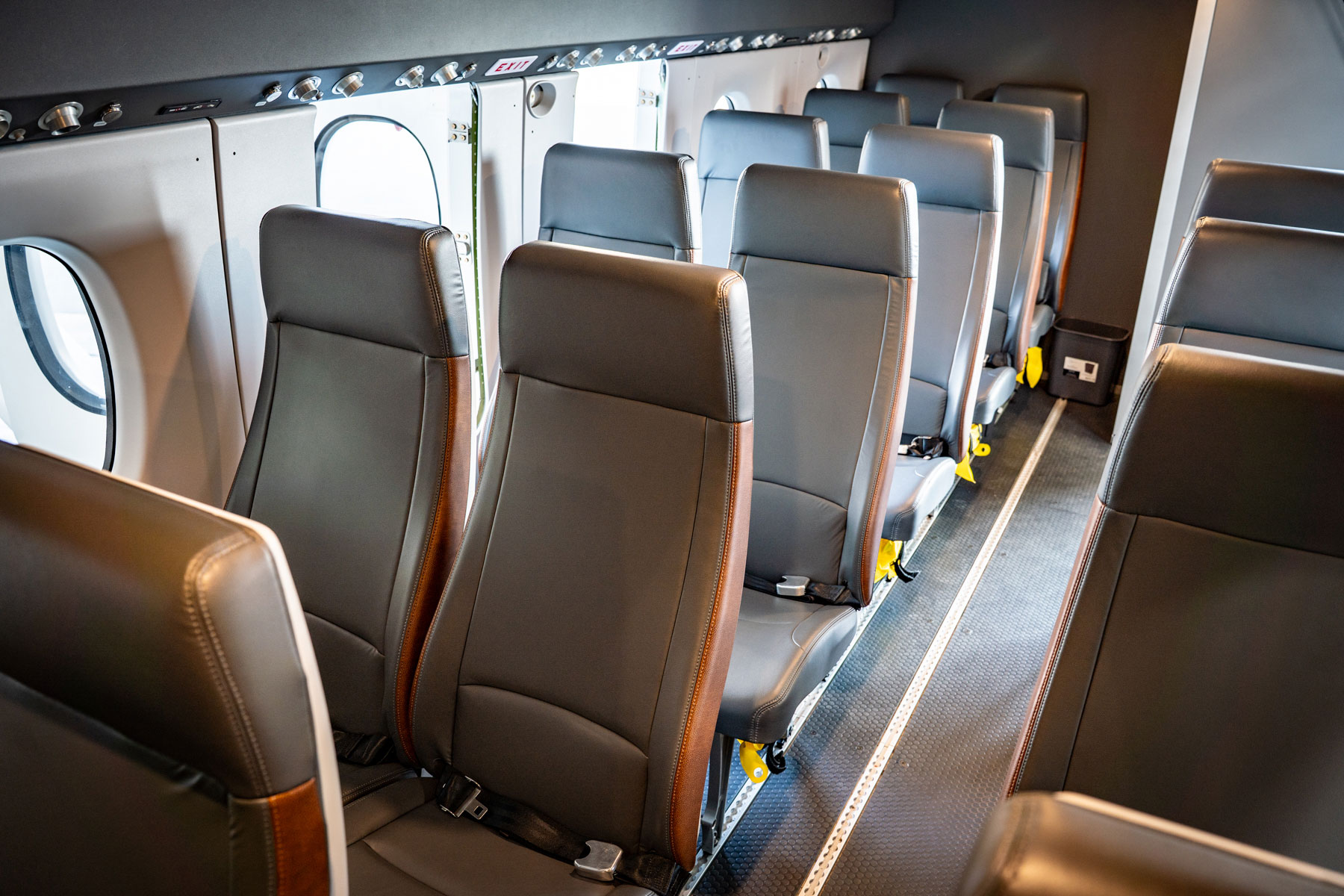
Passenger Comfort
Passenger comfort has been a central focus in the aircraft’s design. A stand-up cabin with fold-down entry stairs simplifies boarding, while the large aft baggage compartment, under-seat storage, and optional overhead bins allow for generous luggage capacity. Interior options include air conditioning, leather seating, logo lighting and an oxygen system, ensuring the aircraft meets modern passenger expectations.
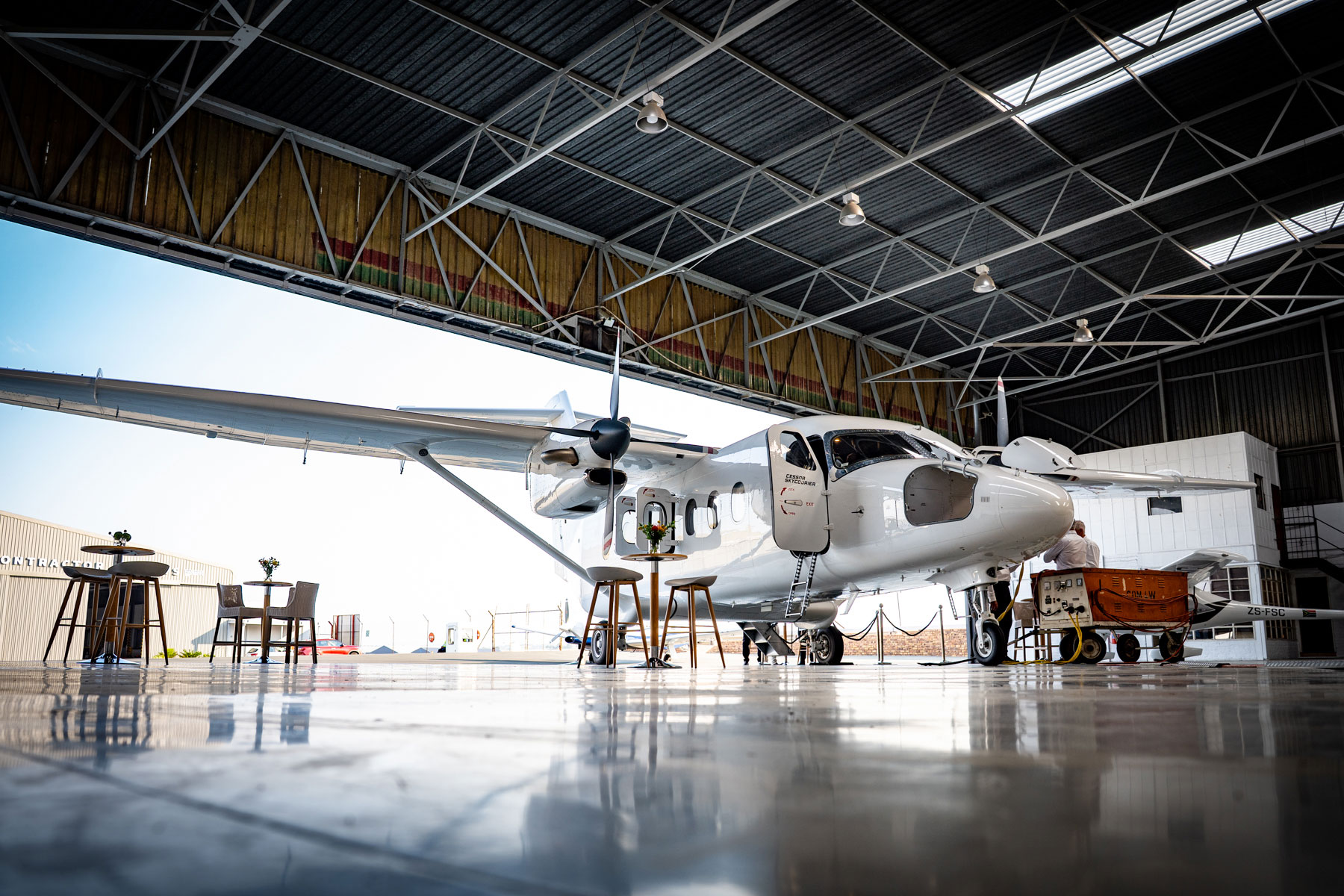
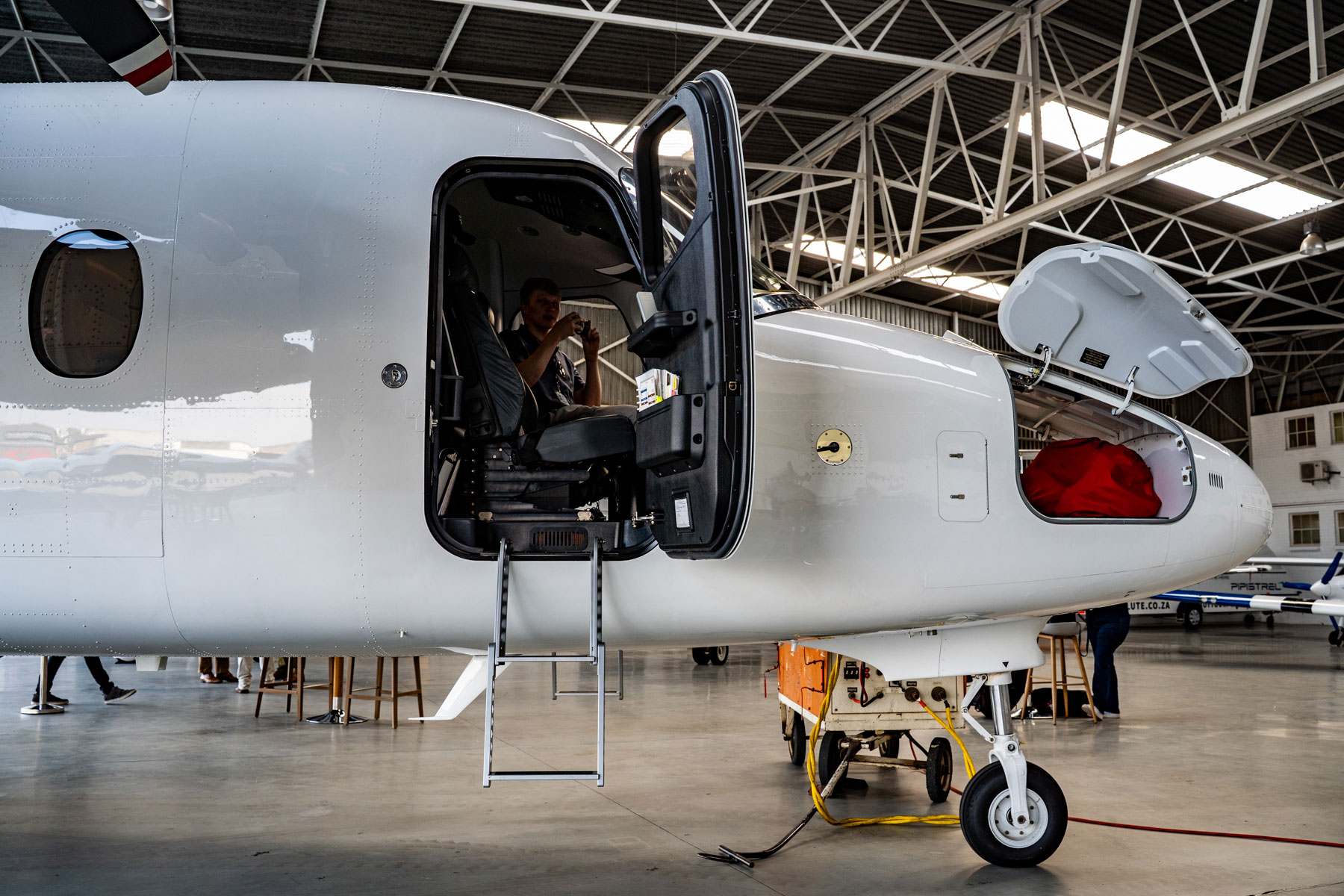
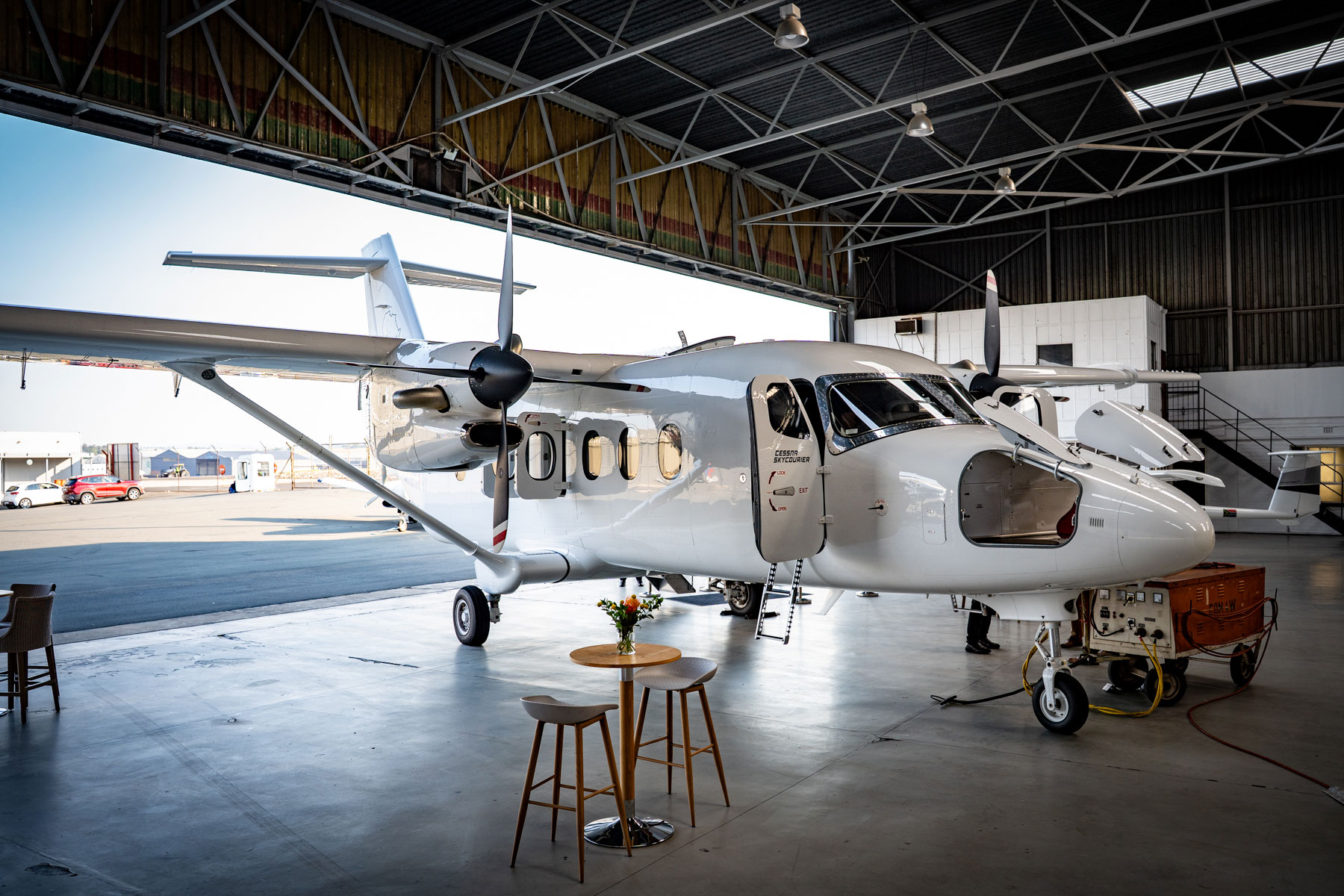
Operational Flexibility
Textron Aviation offers combi and freighter conversion options, allowing operators to configure the aircraft for mixed passenger-cargo or full freight missions. This adaptability broadens the SkyCourier®’s market potential, particularly for government, humanitarian and security applications.
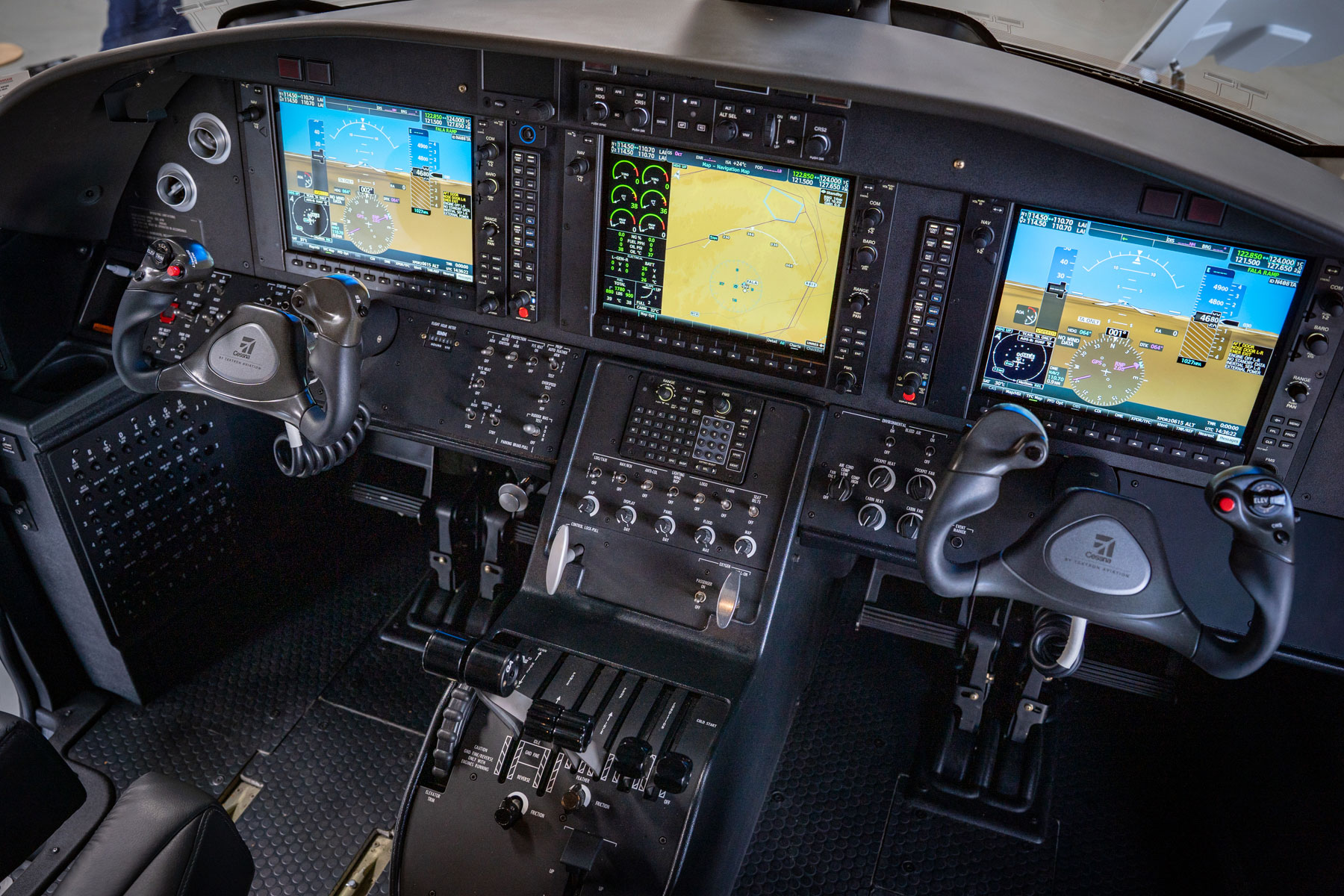
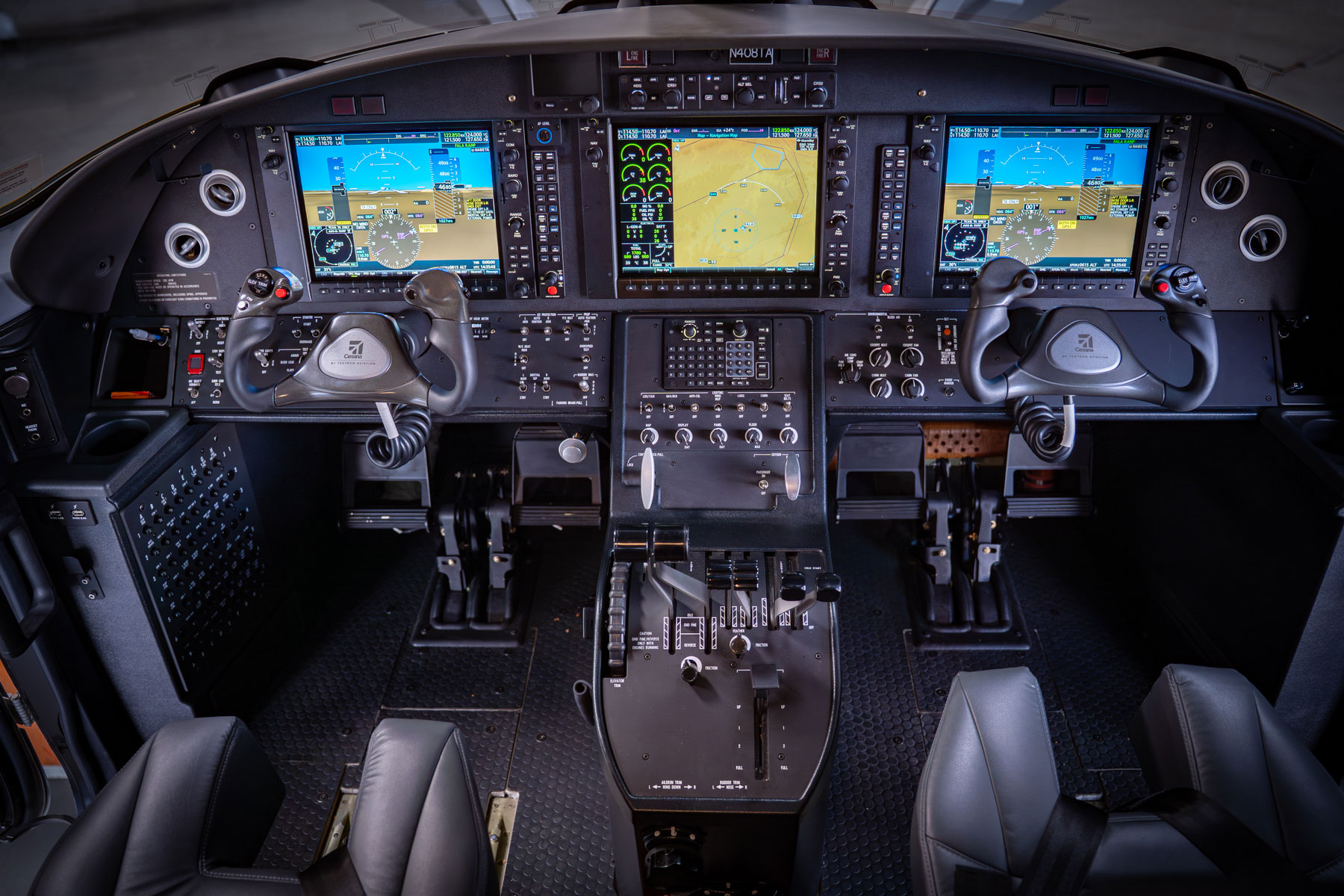
Advanced Flight Deck Technology
The flight deck features the Garmin® G1000® NXi avionics suite. Pilots benefit from three 12-inch displays, engine indication systems, TAWS-B, cockpit voice and flight data recorders, and optional synthetic vision—enhancing situational awareness and safety.
